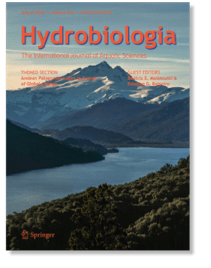| Custom Content |
Resource versus consumer regulation of phytoplankton: testing the role of UVR in a Southern and Northern hemisphere lake
Villar-Argaiz M, EG Balseiro, BE Modenutti, MS Souza, FJ Bullejos, JM Medina-Sánchez, P Carrillo - 2018
Este trabajo sugiere que el contenido en fósforo de las algas juega un papel clave en en el efecto que la radiación ultravioleta ejerce sobre las redes tróficas (efectos top-down vs. bottom-up). Estos efectos son mucho más débiles en lagos del Hemisferio Sur en relación a Sierra Nevada donde las algas se encuentran muy limitadas en fósforo.
| Models predict that phytoplankton is bot- tom-up regulated by resources and top-down controlled by consumers. However, how the strength of these controls varies with UV radiation (UVR) is not well known. In this study, we test the hypothesis that the phosphorus (P) content of phytoplankton affects the role that UVR exerts strengthening or weakening the resource and consumer control on distinct stoichiometric and functional phytoplankton traits. To accomplish this, we coupled field meso- and microcosms in a split-plot design using UVR treatments at the plot level and nutrients and zooplankton (presence/ absence) at the subplot level, in two mountain lakes characterized by their P-sufficient (La Caldera) and P-deficient phytoplankton (Los Cántaros). We found that the addition of nutrients decreased phytoplankton C:P in both lakes, but enhanced primary production and chlorophyll a only under UVR in La Caldera. Also, the effects of zooplankton on phytoplankton varied between lakes and UVR conditions, and increased primary production and chlorophyll a under UVR in La Caldera, but not in Los Cántaros. These results suggest that differences in the stoichiometric aspects associated with the P content in phytoplankton play a key role in how UVR affects resource and consumer controls, with much weaker effects in P-deficient food webs. |
 |
|

